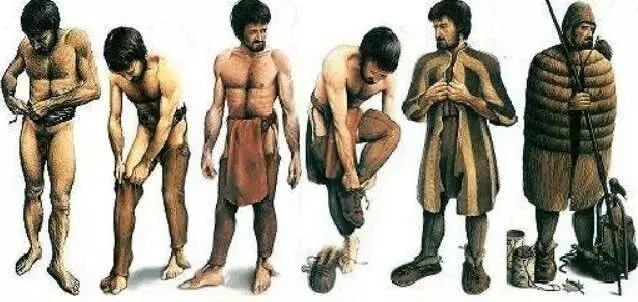Threads We Wear
Gandhi would never have had a wardrobe malfunction!

Mahatma Gandhi shed his formal Gujarati attire in 1921 to be one with the common man on the street. Branded clothes these days guzzle gazillion amounts of money. But here was a gent who became a global brand with a dhoti, granny glasses and a stick. Scoffed as a 'naked fakir' by Winston Churchill , Gandhi retained his sartorial preference for the loincloth.
He called on King George V and Queen Mary at Buckingham Palace in the same minimal attire. On a journalist's shocked query if his scanty clothes had been adequate, Gandhi made a riposte that pulverised the proverbial stiff upper lip of the British Press. He lightly remarked: "But the King was wearing enough clothes for both of us". Touché!
On a lighter note, one positive fallout of this decision to wear minimal clothes was that Gandhi would never have a wardrobe malfunction! And unlike Ranveer Singh, Bapu was never accused of being a 'nude dude' in India.
His brilliant strategy was to blend in with the huge swathe of unwashed and unclad masses. Arvind Kejriwal, not a Gandhi match certainly, adopted the Aam Aadmi attire with a somewhat similar approach and won a large following amongst the people. He went on to stride successfully in the political corridors.
During the serial Covid lockdowns one realised, with rising embarrassment, that the privileged had clothes stuffed into closets which hung there feeling blue without any outing. Most people, with WFH (work from home) being the dominant mode, got into what is called the 'goblin mode' these days.
In other words, wear any comfy unmatched clothes bordering on sloppy, but be happy in your skin, and what's on it, and two hoots to what others think! Maybe a third hoot too, for good measure!
Archaeological studies show that humans started wearing clothes in the Pleistocene period more than 170,000 years ago. The hunter- gatherers covered themselves with animal fur and hide, grass, leaves, bone and shells.
The bone tools found in some caves in Africa connect the dots in this evolving narrative of the threads we wear. Moving out of Africa, clothing was indeed a necessity to save the body from frigid temperatures in Europe.
Interestingly enough, textiles are coming full circle now. Because of sustainability being such a mantra, designers are using everything from fibres of seeds, leaves, fruit and from bast, or the outer cell layers of the plant stems. With technology riding the waves we have new experiments in fabric manufacturing.
Handloom fabrics in India woven by deft fingers in homes, in many cities and towns of the subcontinent, are still looms ahead of the machine made fabrics. The British Empire in its quest (or conquest!) of our resources learnt to admire the beauty and warmth of Kashmiri Pashmina and hence we have Cashmere from Scotland. An altered version though.
There is the storied Banarasi brocade in a city associated with moksha. The shimmering brocades and silks with designs that defy imagination, originally woven in threads of gold and silver for the royalty, leave the aesthetic in you almost in a state of nirvana.
The sari comes in myriad fabrics, designs, textures and drapes. From the plain sari a la Mother Teresa, to the opulent saris of Maharanis, the sheer chiffons of Maharani Gayatri Devi to gossamer Chanderis from Madhya Pradesh, Tussars from Bihar, Jamdanis from Bengal, Kanjeevarams from Tamil Nadu, Patolas from Gujarat, each with a unique identity. The men seem to lag behind in this fabric bonanza but they too have achkans and jackets crafted from brocade, khadi or Tussar silk.
Ponder this! It was the length of Draupadi's sari that prevented the chir-haran (stripping ) from becoming a public molestation and humiliation in Mahabharata after Yudhishter's loss in a game of chess with the wily Kauravas. Of course, the divine intervention by Lord Krishna ,by extending the sari endlessly, helped!
Sant Kabir, a weaver poet of the 15th century,lifts threads to an exalted level with a weaving metaphor---'Jhini Jhini Beeni Chadariya '---the body being a thin cloth covering made with the warp and weft of life.



